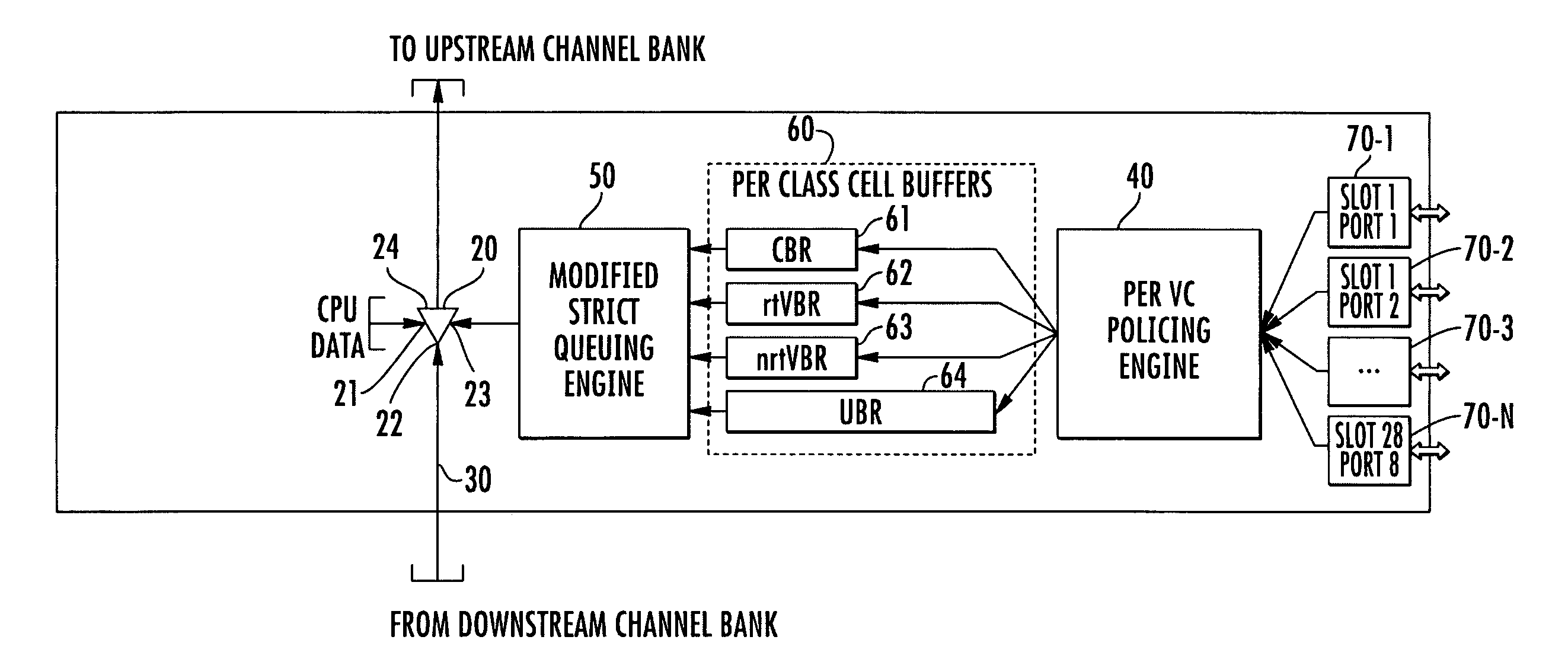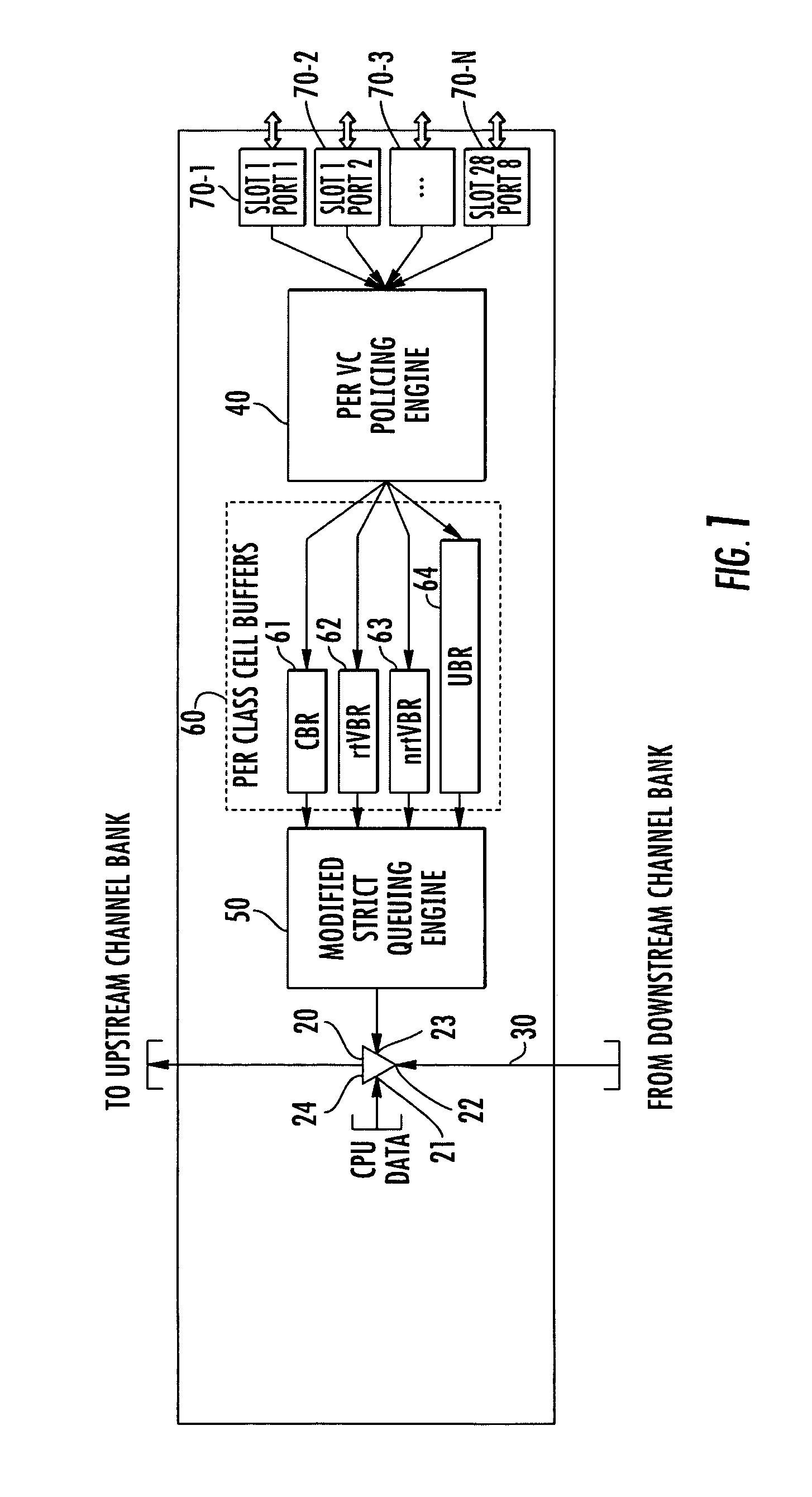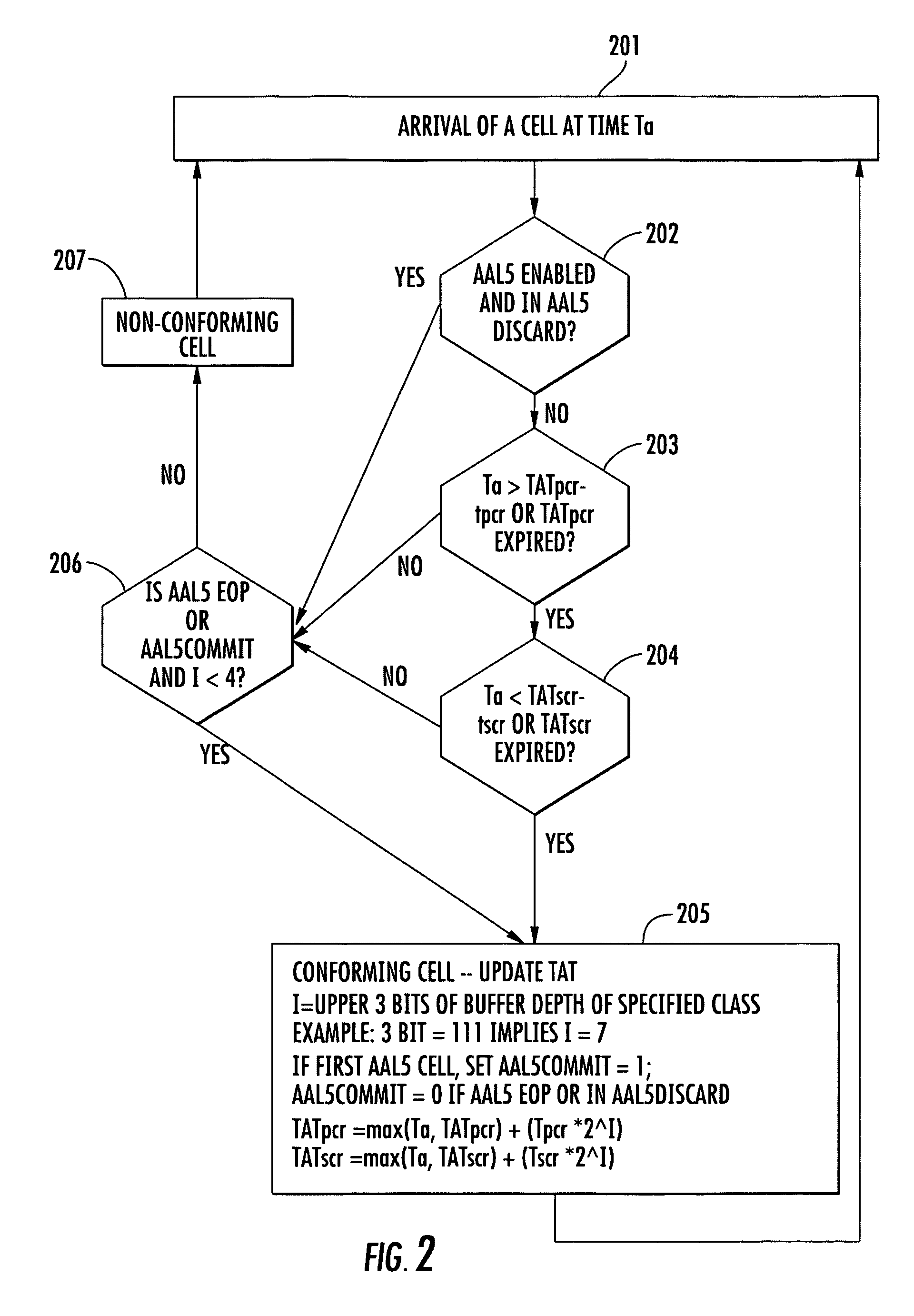Policing engine providing dynamic adjustment of peak and sustained data cell rates and efficient transfer of AAL5 cells
- Summary
- Abstract
- Description
- Claims
- Application Information
AI Technical Summary
Benefits of technology
Problems solved by technology
Method used
Image
Examples
Embodiment Construction
[0020]Before detailing the policing engine in accordance with the present invention, it should be observed that the invention resides primarily in a prescribed arrangement of conventional digital communication circuits and components and attendant supervisory communications microprocessor circuitry, as well as application software therefor, that controls the operations of such circuits and components. In a practical implementation that facilitates its incorporation into commercially available digital telecommunication transceiver equipment, the inventive arrangement is preferably implemented using field programmable gate array (FPGA)-configured, application specific integrated circuit (ASIC) chip sets. In a hardware implementation, digital ASICs are preferred.
[0021]Consequently, the configuration of such subsystems and components and the manner in which they may be interfaced with telecommunication channels have, for the most part, been shown in the drawings by a readily understanda...
PUM
 Login to View More
Login to View More Abstract
Description
Claims
Application Information
 Login to View More
Login to View More - R&D
- Intellectual Property
- Life Sciences
- Materials
- Tech Scout
- Unparalleled Data Quality
- Higher Quality Content
- 60% Fewer Hallucinations
Browse by: Latest US Patents, China's latest patents, Technical Efficacy Thesaurus, Application Domain, Technology Topic, Popular Technical Reports.
© 2025 PatSnap. All rights reserved.Legal|Privacy policy|Modern Slavery Act Transparency Statement|Sitemap|About US| Contact US: help@patsnap.com



